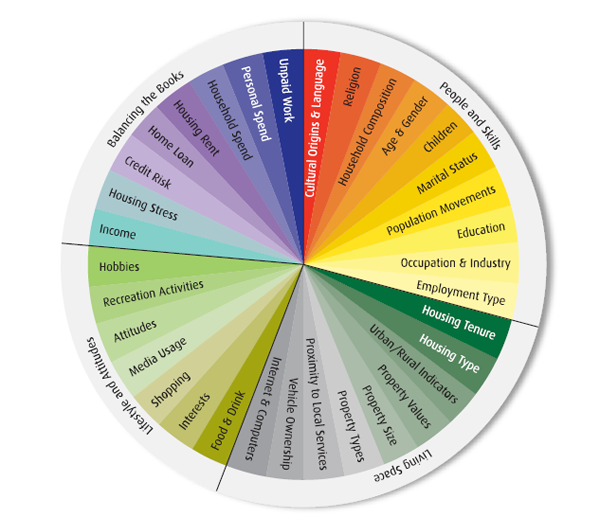How to effectively segment your data
It’s a well-known fact that relevance is one of the points to focus on when sending promotional email messages to your customers. Data is relevance! The data you gather from your customers and store into your central database provides you with tools to create relevant and timely email messages. By segmenting your marketing database into relevant target groups, you are on your way to get the most out of your customer data.
Your customers want to be approached in a personal way. Recent research has shown that one out of four customers removes an email, simply because the message didn’t seem relevant enough to them personally.
Segmentation is key
But how do you use segmentation to compose relevant messages? By analyzing of course:
- Conduct an analysis of the data already stored in your database;
- Determine which target group you want to approach with a specific message based on your marketing strategy.
You apply segmentation because you want to create email campaigns with relevant content for each of your recipients. Combine this with a bit of personalization (for example by using salutation and first name) and your message becomes a lot more relevant.
Let’s use an example: Abandoned shopcart mails are a good example of relevant email marketing. Right?! So try using segmentation to create a specific group of visitors who filled their shopcarts in your webshop but who didn’t complete the purchase. With the help of a decent email campaign you can send this group a first mail within 24 hours reminding them to complete the purchase.
And the same is possible for other variables. Create target groups based on click-, buying- or browsing behaviour.
Who do I have stored in my database?
Before you really get started with segmentation, it’s best you have a look at what you already know about your existing customers, what do you know about their behaviour and their background? They’ve already shown that they are willing to buy your product or services, which makes them the ideal target group.
Analyze their characteristics and use this information to define a profile of the ideal prospect, with the biggest potential. These prospects together with your existing and loyal customers will deliver the highest return on investment on your sales and marketing campaigns.
Implementing the right segmentation in a few steps
Step 1: Which data do you have & which data do you need?
Analyze your database to determine what kind of segmentation you can apply. Did you already gather data such as address or previous purchases? Then you’re already capable of creating target groups based on location or purchasing behaviour.
Thanks to your marketing strategy, you already know which target groups you would like to target. The next step is checking which data needs to be added in order to target those groups. Determine if you would like to set up special campaigns or add an online survey to your regular emails. An online survey or web form could help you collect that extra bit of data.
Step 2: Using the data for targeting
Once you’ve gathered the data, you’re ready to set up targeted email campaigns and adding personalization.
Send out your email campaigns and gather the data you need in a central database. Thanks to this data and segmentation, you’re now capable of sending transactional emails and applying event driven email marketing next to your regular newsletters. Campaigns based on specific moments in your customer life cycle such as birthday mailings or cross- and up-selling campaigns.
Step 3: Applying advanced segmentation
After gathering all of the data you need, you can start applying advanced segmentation. This means thinking out of the box and digging deeper into your data. Look beyond that basic information such as ‘name’, ‘address’ or ‘birthday’ and see what kind of other information you can use.
For example, next to segmenting on gender or industry, think about segmenting groups based on ‘date of last purchase’, ‘most popular product’, ‘brand preference’ or clicking-, buying- or browsing behaviour.
How do I apply advanced segmentation?
The latter segmentation variables enable you to apply advanced segmentation and to better adapt your communication to your target group(s). Again, this begins with checking whether you already have this data stored in your database.
It could be that you’re using an e-commerce platform (like Magento, hybris or Drupal) where this additional information is stored. In this case it might be worth to see whether you are capable of linking your e-commerce platform to your marketing software in order to store all of the data in one place and to use it for more targeted communication.
For example: You are using a Magento webshop platform in which you have stored a lot of customer data such as buying behaviour, browsed products and brand preferences. But this platform is not capable of sending custom, personalized and relevant messages to your customers. By linking your webshop platform to your email marketing software, you enable yourself to keep all of your data up-to-date at all times and to apply advanced segmentation and create targeted email campaigns such as:
- A targeted loyalty email campaign for every customer who purchased more than six items in your webshop during the last six months. In this case, you create a target group based on the number of orders stored in your database and the time between the first purchase and the last purchase.
- Special offer campaigns for specific brands. Segment your target groups based on email results of previous campaigns, customers who clicked on a specific brand several times and possibly customers who purchased this brand more than once.
- Abandoned shop cart campaigns. Create a dynamic segment in your database which checks who filled a shopping cart in your webshop, but did not complete the purchase. You can add the items from that shopcart to a specific email campaign. Why is that segment dynamic? Because you can set your marketing software to refresh this segment every day.
This article has already been published on Econsultancy.com - How to effectively segment your data


















